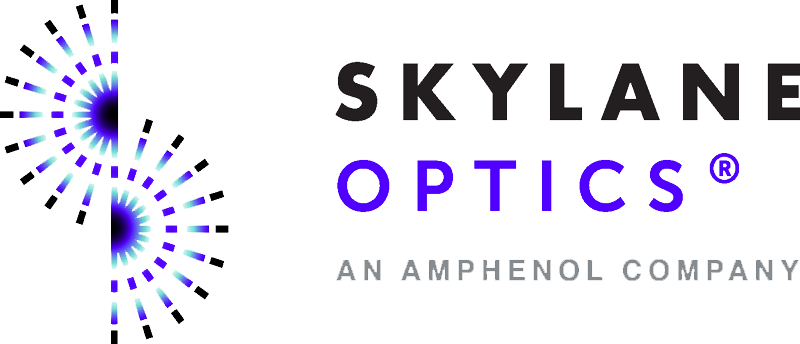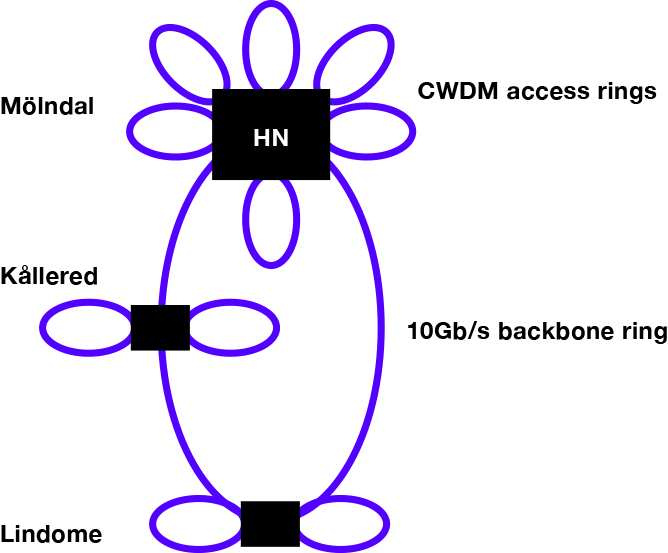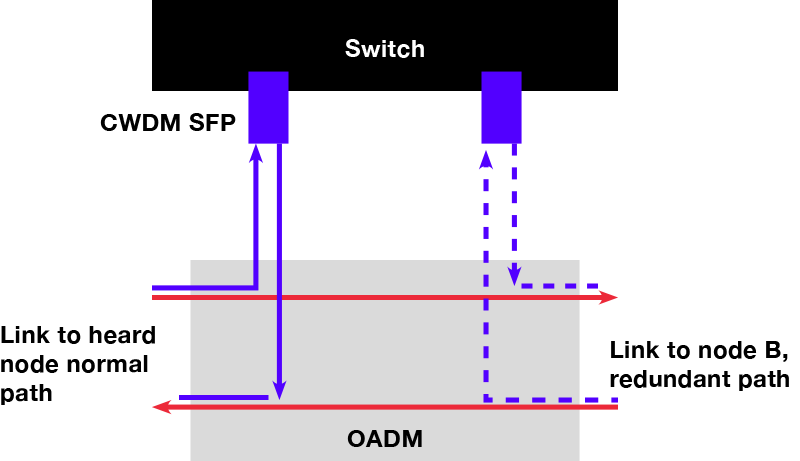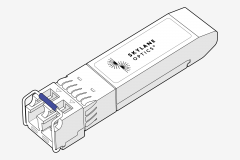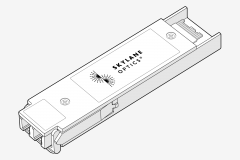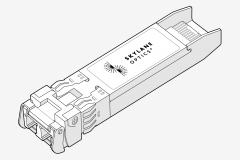Components used:
Switches
This network was achieved by using standard switches. The switches have been configured to handle the redundancy and the monitoring of the network. The switch turn over time is for the network is 50ms. As for the monitoring, the alarms are sent as SMS to the employees of the municipality IT department.
Pluggable optics
SFP, Small Form-factor Pluggable, is the optical transceiver type used in most switches today. For this network standard 1Gb/s CWDM SFPs from Skylane optics®. To take for account the attenuation in the add-drop nodes the 80km version with a link budget of 32dB was used, even though the diameter of the rings was less than 80km.
Filter
The CWDM technology is enabled by using a multiplexing unit, Mux/Demux, combining all wavelengths at the head node and a one channel Optical Add Drop Module, OADM, at each node. This was supplied by Skylane Optics® The filter units are totally passive devices using no electricity, so they are not affected by power failure.
